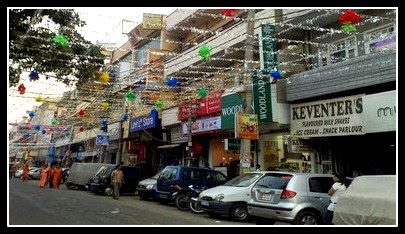HOW TO REACH HERE: Vishwa Vidyalaya metro station on the Yellow Line and Pul Bangash metro station on the Red Line are the closest Delhi Metro stations.
HISTORY: Kamla Nagar is named after Kamala Nehru, a freedom fighter and wife of Jawaharlal Nehru. The neighbourhood rose to prominence after the erection of Ram Swarup Clock Tower on the Grand Trunk Road in 1941, and the construction of Jaipuria and Birla textile mills. It was also a stop of the erstwhile Delhi Tram Service. Later, it was developed as an affluent residential area in 1950s.
Kamla Nagar and its adjoining neighbourhoods were centre of political activity during the late British Raj and the first two decades after Independence. Freedom fighters and political personalities like Aruna Asaf Ali, Guru Radha Kishan, Bharatiya Jana Sangh General Secretary Kanwar Lal Gupta, Purshottam Goyal, Murari Lal Gupta Chharia and Shivcharan Gupta were active there.[1] Wrestlers like Dara Singh, Guru Hanuman, Satpal Singh, Bhupendra Dhawan and Maha Singh Rao trained in the akharas of the area. It was also a cultural hub after Independence with Gulzar, Santosh Anand and Manoj Kumar being active there during some part of their lives before becoming popular in Bollywood.It was also the venue of Guru Radha Kishan's 24 day fast to support the rights of labour unions of textile mills where he rose to prominence from. He was also elected the youngest member of Delhi Municipal Committee.
P.S Kamla Nagar market is closed on Mondays.
While the market is surrounded by leafy and broad avenues dotted with the famous colleges of Delhi, the market itself is crowded and busy at all times.


No comments:
Post a Comment